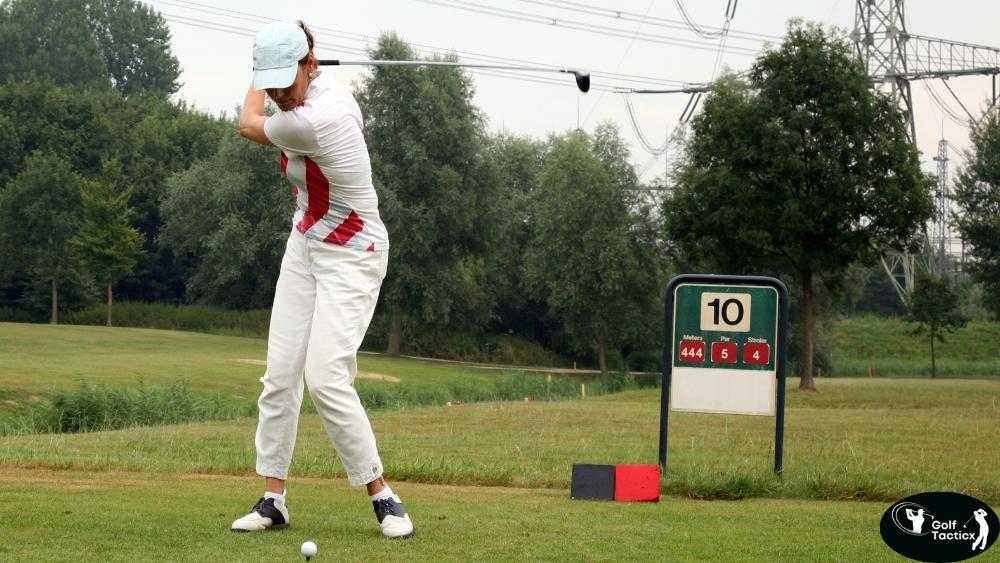In our previous post, we explored Adjusting Your Approach to Different Course Layouts and Designs. As a beginner golfer, understanding when to play aggressively and when to adopt a more conservative approach is crucial for improving your game and achieving better scores.
Your decision-making on the course can significantly impact your performance. Let’s explore the key factors that should guide your choices between aggressive and conservative play.
Building on that, mastering the aggressive-vs-conservative-golf-strategy means knowing how to balance risk and reward during your rounds. Sometimes taking bold shots can lead to great advantages, while other times playing it safe helps avoid costly mistakes.
Factors like weather, course conditions, and your confidence level all play a role in shaping this strategy. By learning to read these elements and adjust accordingly, you can develop a smarter, more flexible game plan. Whether you’re aiming to lower your handicap or just enjoy the game more, understanding the aggressive-vs-conservative-golf-strategy will give you a valuable edge on the course.
Course Layout and Design
The design of the golf course plays a significant role in determining your approach:
Hazards: Courses with numerous water bodies, bunkers, and out-of-bounds areas may require a more conservative strategy to avoid penalties.
Fairway Width: Narrow fairways demand precision, making conservative play more advantageous.
Green Size and Slope: Small, undulating greens may necessitate accurate approach shots, favoring a conservative approach.
Doglegs: Sharp doglegs may limit driver use, encouraging strategic placement over distance.
Elevation Changes: Significant uphill or downhill holes can affect club selection and risk assessment.
Pin Placement Opportunities: Certain layouts offer accessible pin positions that may tempt a more aggressive approach.
Your Skill Level and Confidence
Assessing your own abilities is vital:
Driving Accuracy vs. Distance: If you’re more accurate than long off the tee, prioritize hitting fairways over distance.
Approach Shots: Identify your preferred yardages and clubs for approach shots.
Short Game: Evaluate your chipping and putting skills, especially on different green types.
Understanding your strengths and weaknesses helps in making informed decisions.
Course Conditions
Weather and course conditions can influence your strategy:
Wind: Strong winds may require lower, controlled shots, favoring conservative play.
Rain: Wet conditions can affect ball behavior, making aggressive play riskier.
Temperature: Hot weather can impact your energy levels and concentration, potentially leading to more conservative decisions.
Course Maintenance: Recently aerated greens may slow putts, reducing the benefit of aggressive approaches.
Fairway Firmness: Firm, fast fairways can encourage bold tee shots, while soft ground may call for more cautious layups.
Rough and Bunkers: Longer rough or softer bunker sand can make recovery shots harder, often favoring a conservative approach.
Tournament Situation
In a competitive setting, your position in the tournament can affect your approach:
Leading: If you’re ahead, playing conservatively can help maintain your lead.
Trailing: If you’re behind, a more aggressive strategy might be necessary to catch up.
Tied: Assessing the strengths and weaknesses of your competitors can inform whether to play aggressively or conservatively.
Final Holes: The last few holes may call for a shift in strategy, depending on your standing and scoring opportunities.
Match Play Format: In head-to-head play, your opponent’s choices can directly influence whether you take risks or play it safe.
Cut Line Pressure: In multi-round events, being close to the cut may require calculated risks to ensure advancement.
Risk Assessment
Evaluating potential outcomes is crucial:
Risk vs. Reward: Is the potential gain worth the risk?
Course Conditions: Wind, rain, and other factors can influence shot outcomes.
Tournament Pressure: Maintain composure and stick to your plan, even under pressure.
Mental State and Fatigue
Your psychological state can impact decision-making:
Confidence: A positive mindset may encourage more aggressive play.
Fatigue: Physical tiredness can lead to conservative decisions to minimize errors.
Emotional State: Managing emotions like frustration or excitement is essential for making rational choices.
Historical Performance
Reflecting on past rounds can provide insights:
Successes: Identify situations where aggressive or conservative play led to positive outcomes.
Mistakes: Learn from past errors to avoid repeating them.
Patterns: Recognize patterns in your decision-making to improve future strategies.
Course Knowledge
Familiarity with the course can influence your approach:
Pin Placements: Knowing where the pins are located can help in deciding whether to attack the flag or play it safe.
Green Reading: Understanding the slopes and breaks can inform your putting strategy.
Local Conditions: Awareness of typical weather patterns and course conditions can aid in preparation.
Equipment and Physical Condition
Your gear and physical state can affect performance:
Club Selection: Choosing the right club for the shot is crucial.
Physical Health: Injuries or physical limitations may necessitate a more conservative approach.
Equipment Familiarity: Comfort with your clubs and gear can influence confidence levels.
Playing Partners
The behavior of those you’re playing with can impact your decisions:
Pace of Play: A faster group may encourage quicker, more aggressive decisions.
Skill Levels: Playing with more experienced golfers might influence you to take on more risk.
Attitudes: The demeanor of your partners can affect your mental state and decision-making.
Weather Impact
Weather plays a big role in shaping your strategy. Strong winds might push you toward a more conservative play, while calm conditions could encourage a bolder approach. Rain can slow greens and affect ball roll, making distance control even more important. Always factor in the forecast before and during your round.
Practice Round Insights
| Factor Tested | Aggressive Approach Outcome | Conservative Approach Outcome |
|---|---|---|
| Short Par 4 | Eagle opportunity but OB risk | Safe par with low risk |
| Long Par 5 | Chance for green in two shots | Controlled layup, easier third |
| Narrow Fairway | Rewarding birdie chance | Steady par, no penalty strokes |
When considering Seasonal Playing Trends, think about how your game changes across the year. Many golfers notice they play more aggressively in peak season when their swing is grooved and confidence is high, and lean more conservative during early spring or after a break. Tracking these patterns can help you choose the right mindset for the moment.
Conclusion
Balancing aggressive and conservative play is a dynamic aspect of golf that requires careful consideration of various factors. By assessing the course layout, your skill level, current conditions, and other influencing elements, you can make informed decisions that enhance your performance. Remember, the key is to play within your abilities while strategically managing risks and rewards.
To add, embracing the aggressive-vs-conservative-golf-strategy mindset allows you to stay adaptable throughout your round. Golf is unpredictable, and being able to switch between bold and cautious tactics helps you handle challenges more effectively.
Keep practicing this balance, and over time, it will become second nature, helping you enjoy the game and improve consistently. Always remember, smart decision-making on the course is just as important as your swing.
In our next post, we’ll focus on Analyzing Pin Positions to Maximize Birdie Chances, giving you the insight needed to fine-tune your approach shots and lower your scores.
















Leave a Reply